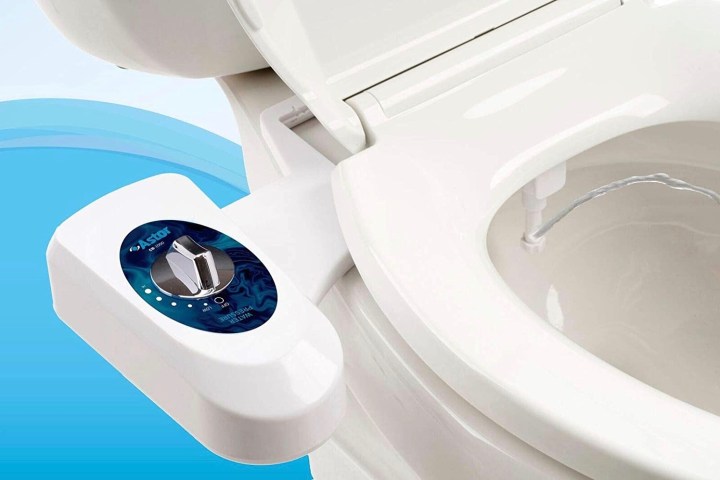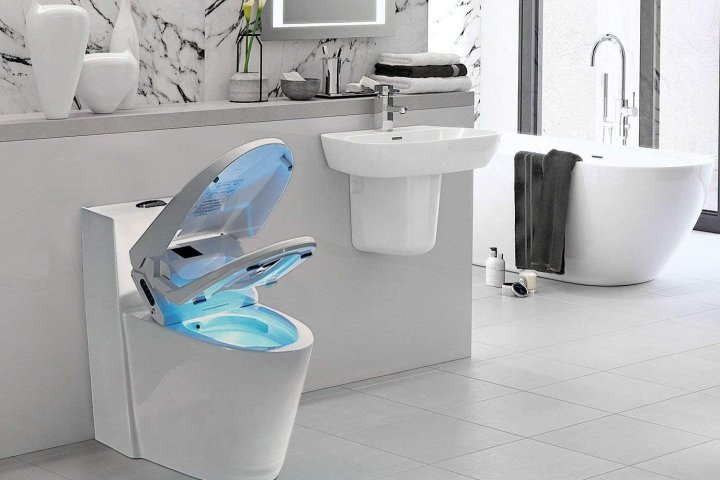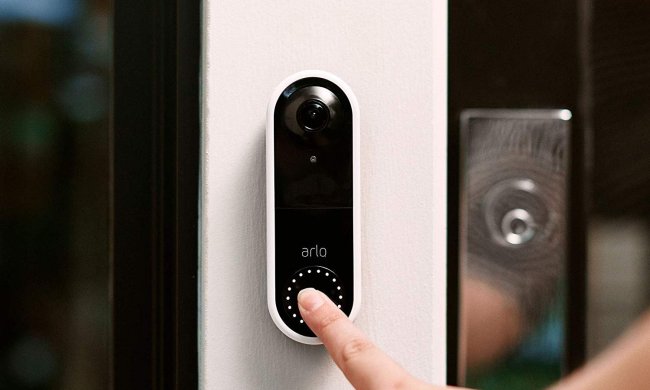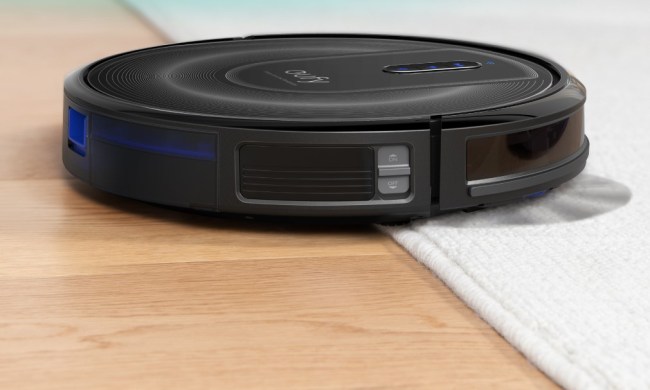Have you thought about installing a bidet in your home? A bidet brings to mind the idea of shooting jets of water right up in your unmentionables after a visit to the toilet, but today’s bidets are a whole lot more than that. They have features that are an excellent complement to modern bathrooms even if you don’t use them often — and they’ve become immensely popular in the United States, thanks to a combination of a pandemic and employees getting used to the option at their offices.
Thanks to modern bidet attachments (also called washlets, among other terms), you can convert all kinds of traditional toilets into a version of a bidet with the right setup (we’ll talk more about this below). There’s never been a better time to consider adding a bidet to your home, but the big question remains: Is it actually worth it? Let’s take a closer look at what you should know, so you can decide what’s right for you.
Rinse vs. wipe

The core of the bidet argument is this: Is cleaning with water better than cleaning with toilet paper?
We are big proponents of the rinsing argument. You don’t just have to trust our experiences alone — there are plenty of others who discuss their experiments with bidets and how they were won over. Bidets excel at removing waste particles, keeping your butt cleaner, and removing most of the issues with leaving toilet paper bits behind. You may need a square or two to pat yourself dry, but that’s it. Not only is it easy, but it’s gentler on your bottom and avoids any unnecessary irritation (which may or may not be compounded by what you ate last night). There’s also less chance of accidentally getting fecal matter someplace you don’t want it.
Additionally, there are other factors beyond how clean your butt can be. Switching to a bidet comes with a couple of other benefits that buyers should know:
- Bidets save waste. You use much, much less toilet paper, which helps you save money and avoid toilet clogs, while also being healthier for your sewage system.
- Bidets save time. Cleaning yourself is more efficient when you aren’t literally wiping waste around.
- Bidets may be an easier option for some people. They can be a lot more comfortable for those recovering from various surgeries, or those with arthritis and mobility issues.
Then there are a few important considerations on the other side of things:
- Not all your guests will be comfortable using a bidet or will know how to use one. That could mean making sure your toilet paper supply is well stocked, or choosing to keep your guest bathroom bidet-free.
- Learning to use a bidet can take a little practice. That’s particularly true for young ones, as bidets are generally designed for adults. If you have kids in your home, have a plan for setting up some bidet rules.
- You will have to periodically clean bidet attachments, which can be a bit more labor-intensive than typical toilet cleanings.
- While you save on toilet paper, bidets can use more water — depending on usage. If you’re interested in the environmental pros, it’s a good idea to use as little water as possible and pair a bidet with a “low-flow”-style toilet to help control your water usage. If you take those steps, a bidet can save on water because you don’t need extra flushing to dispose of toilet paper.
Hot or cold? Exploring the world of bidet features

Bidet seat attachments come in two broad flavors. There are simple versions that tap into your toilet’s water line and offer a jet of water at the same temperature as your toilet water. Then there are options that tap into your hot water line from your sink (or have their own little heater) for your cleaning experience. We really can’t recommend the heated option enough, especially for those cold mornings.
However, beyond the heated/non-heated issue, there is a whole array of bidet features that can drastically change your experience or make the bidet far more useful than it would otherwise be. You can take a look at our full guide to the best bidets to learn more, but here are a few examples of what we’re talking about:
- Adjustments for everything. The temperature of the water, the force and direction of the jet — advanced bidets allow you to adjust everything until it’s just right.
- A separate handheld sprayer. This tool can be used for more tricky situations or some additional female cleaning depending on what’s needed.
- A nightlight so you don’t miss at night.
- Since a bidet often replaces your toilet seat, it’s no surprise that many offer heated seats!
- Pre-cleaning options that give the bowl a quick rinse before you even sit down, just in case.
- The very smartest bidets can even remember personalized settings for multiple people and play music, but these aren’t particularly common.
Installation and compatibility

Installation is where bidets get a little tricky. First, not all bidet attachments work with every style of toilet. You need to find a bidet attachment that will fit on your toilet and that is compatible with the shape of your bowl (oval, traditional, square, etc.), which can take some research. If your toilet is in an especially tight space, installing the bidet and its controls/components may be difficult or impossible.
Second, if you are interested in heated water or other more advanced features, you’ll need to do extra work. Attaching the bidet to your toilet line is a DIY project, but if you are attaching it to both your hot water line and your toilet line, you may need to bring in a plumber. For more advanced features and controls, your bidet will need access to electricity. Electrical outlets aren’t always common in bathrooms, and may not be anywhere near the toilet if they are present. That means tackling a wiring project or calling up an electrician.
For more information, the Home Improvement Dude has an in-depth guide on installing various types of bidets that’s a great place to begin.
Do bidets offer health benefits?
Bidet brands will happily tell you that they do, but your real-world experience may vary a little. Yes, you’ll get cleaner and have fewer particles lingering around compared to wiping with toilet paper. For those who experience frequent chafing or similar issues, this can be a godsend. Others may notice relatively few improvements. Overall, a bidet can make it harder to spread certain germs and infections, and may lower the risk of hemorrhoids.
There are other situations when a bidet can help deal with conditions. Women who are menstruating may find it easier to clean up with the help of a bidet. Seniors who have lost some mobility may appreciate that a bidet makes cleaning less of a hassle, as may those who have a number of medical conditions that make using the bathroom challenging.
Bidet pricing

Pricing can often be an issue when choosing whether or not to invest in something like a bidet. The good news is that with so many options for features, there are bidets for many budgets.
If you aren’t interested in heated water or extra features, you can find a bidet for under $50 without a problem. If you want heated water, expect the price to rise closer to $100 or more. Extra features and controls will have bidets costing several hundred dollars. And if you’re looking for a whole toilet replacement, you can easily spend thousands of dollars getting a super-smart, luxurious bidet.
If you are interested in finding a reasonably priced model, swing by our guide to the best bidet toilet seat deals. We update it constantly, so it’s an excellent place to begin.
Saving on toilet paper

One of the touted benefits of a bidet is that you don’t need to buy toilet paper anymore. Of course, that’s not really true – you’ll still need some toilet paper, but you’ll use a lot less. Studies have shown that Americans spend around $182 per year on toilet paper, and that number has gone up in recent years. Most of that can be saved if everyone in a household uses a bidet.
There are also eco-friendly benefits to this approach. Using less toilet paper means creating less waste, and sewer systems are generally healthier when you flush fewer materials down the drain.



